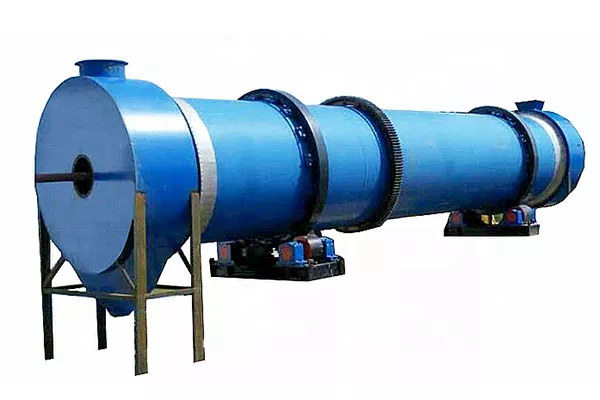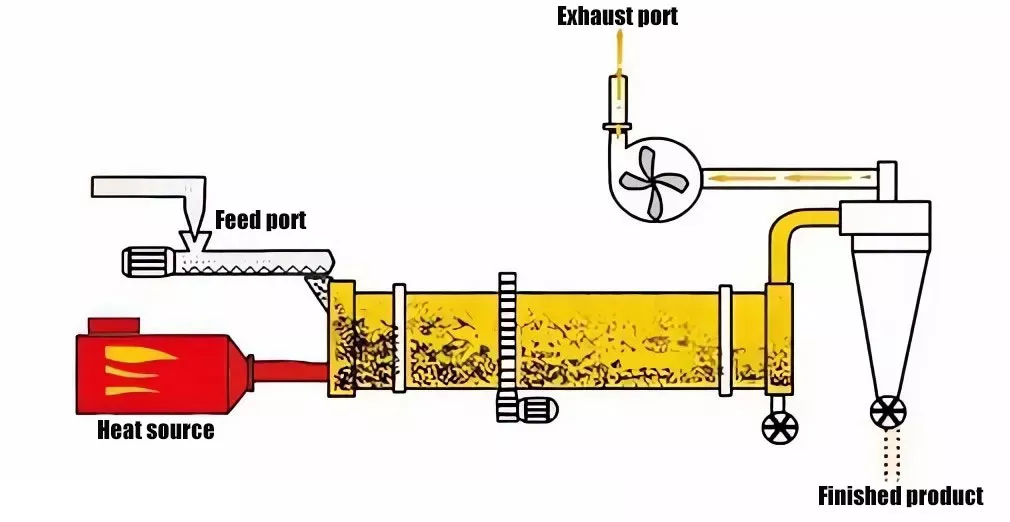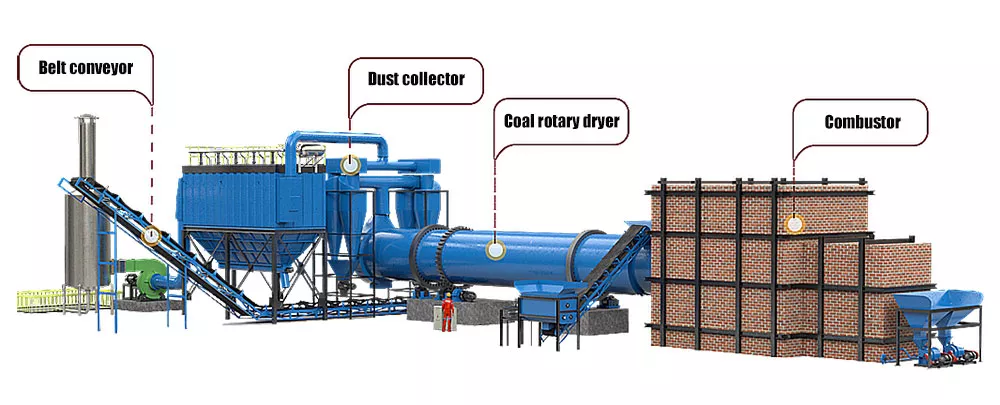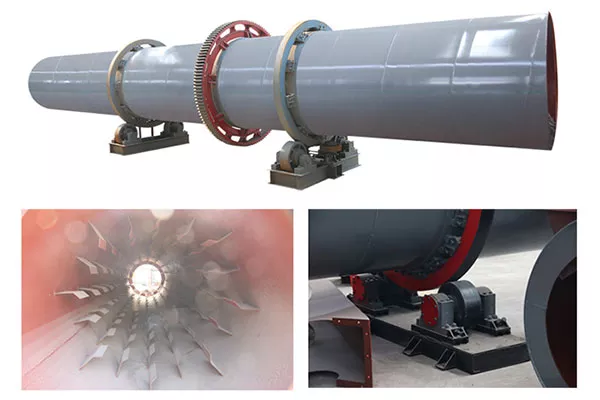Coal Rotary Dryer Machine

How does the coal rotary dryer work?
A coal rotary dryer is an industrial dryer used to dry materials such as coal, lignite, peat, and other materials. The coal rotary dryer operates on the principle of heat transfer; the rotary dryer for coal typically consists of a large, cylindrical drum inclined slightly from the horizontal. The wet coal is fed into the rotating drum, which is heated by a burner or other heat sources. As the drum rotates, allowing the coal to be lifted by internal fins and showered through the hot air stream, it cascades down in a curtain, exposing a large surface area to the hot gas stream; it increases the contact area between the coal and hot air, causing the moisture to evaporate.

What are the parts of a coal drying plant?

The main parts of a coal drying plant typically include:
1. Feed chute: This is the inlet through which the wet coal enters the rotary dryer.
2. Rotary drum: A cylindrical drum rotates slowly, allowing the coal to be heated and dried evenly.
3. Burner: It provides a heat source for drying the coal. It can be fueled by natural gas, coal gas, diesel, or other fuels.
4. Lifting plate device: These internal components within the rotary drum lift and cascade the coal as it rotates, facilitating efficient drying.
5. Hot air furnace: It generates hot air blown into the drum to provide the necessary heat for drying.
6. Exhaust system: It removes evaporated moisture from the drying process.
7. Dust collection system: It captures and collects any coal dust or fine particles generated during drying to prevent pollution and ensure safety.
8. Control system includes sensors, monitors, and control panels to regulate and optimize the drying process.
These are the essential parts of a coal drying plant. However, the exact configuration will be adjusted according to your requirements.
Working site of coal drying plant
The coal drying plant consists of several key components, including a coal rotary dryer, the leading equipment responsible for removing moisture from coal through heat transfer. The rotary dryer is equipped with a rotating drum, which facilitates drying by exposing the coal to high temperatures and airflow. Additionally, the plant includes a furnace or burner system, which provides the necessary heat supply for the drying operation. This heat source can be derived from various fuels, such as natural gas, coal, or biomass. Moreover, the plant may incorporate a pre-drying section, where the raw coal is preheated before entering the rotary dryer to optimize the drying process further. Overall, the coal drying plant is crucial in improving the quality and efficiency of coal usage while ensuring environmental sustainability.
How to choose the suitable coal rotary dryer for you?
When choosing a suitable coal rotary dryer, there are several factors to consider:
1. Capacity: Determine the required drying capacity based on the amount of coal you need to dry. Consider both the inlet and outlet moisture content of the coal.
2. Efficiency: Look for a dryer with high thermal efficiency, as this will ensure the coal is dried effectively and minimize energy consumption.
3. Drying method: Different dryers use different forms, such as direct or indirect heat transfer. Consider which way is most suitable for your coal drying needs.
4. Operating conditions: Evaluate the operating needs of the dryer, such as temperature, pressure, and airflow requirements. Ensure that the dryer can operate efficiently under these conditions.
5. Maintenance and durability: Choose a rotary dryer that is durable and easy to maintain, with readily available spare parts. Consider the manufacturer's design, material quality, and reputation.
6. Environmental impact: Consider any environmental regulations or restrictions that may apply to your coal drying process. Look for a dryer that minimizes emissions and complies with environmental standards.
7. Cost: Compare the prices of different coal rotary dryers and consider the overall value and long-term cost-effectiveness.

